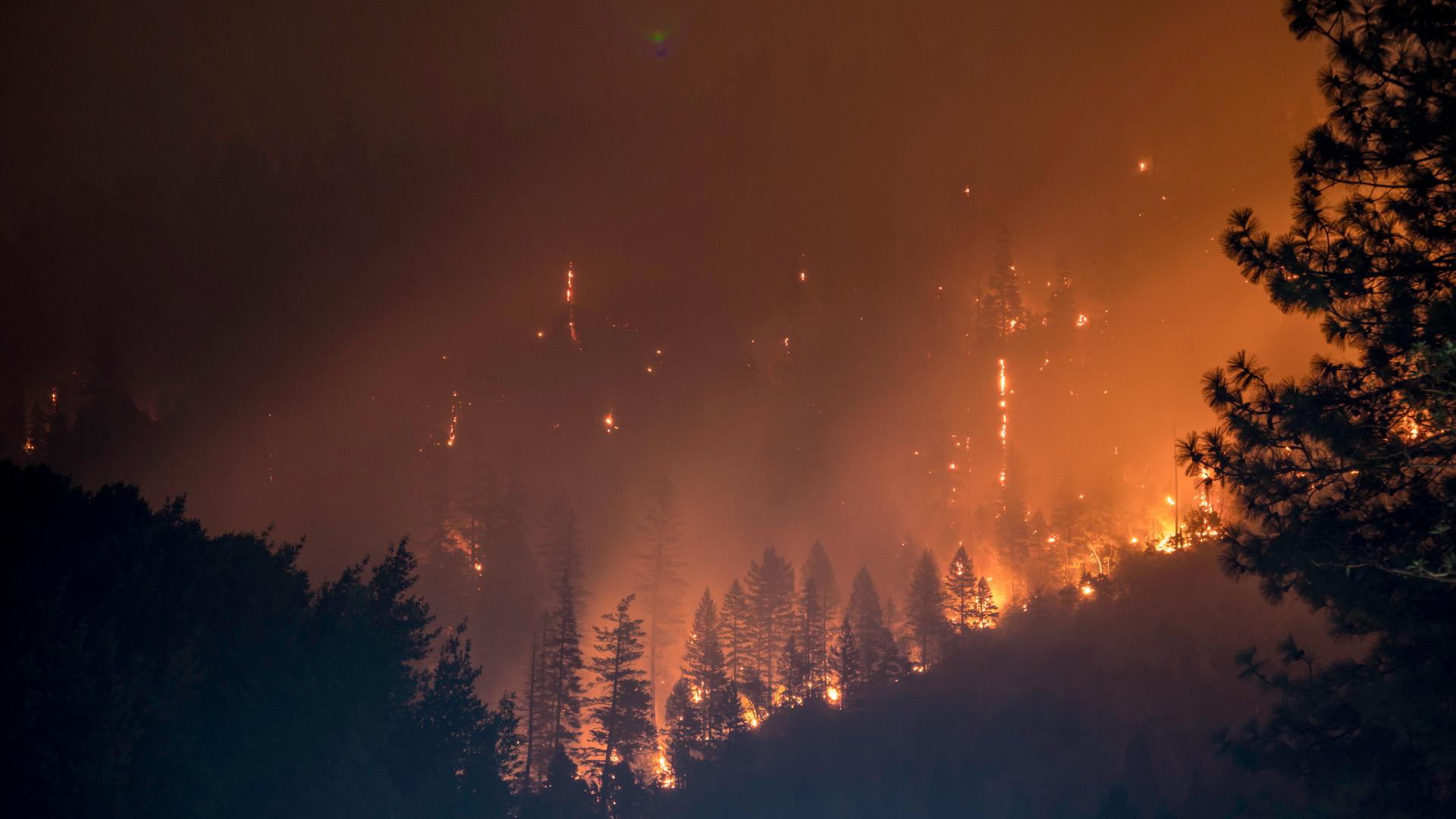30 June 2022 | Climate Tech
Unlocking nature-based solutions
By
In this newsletter, we’ve often discussed nature-based solutions for carbon removal, whether it be regenerative agriculture or the importance of peat bogs. Considering their potential, a reasonable question readers might ask is, ‘Why aren’t countless parties working in concert to save and scale natural carbon sinks all over the globe?’”
The answer lies in part in just how complicating satisfying all the different stakeholders in land management can be. Which is the exact challenge that Vibrant Planet wants to help solve.
Last week, Vibrant Planet announced a $17M seed fundraise. The v1 Vibrant Planet platform, Land Tender, is a multi-pronged tool that offers:
- A scenario planning tool for land management stakeholders
- Land management success monitoring across many potential objectives
- A measurement, reporting, and verification tool for nature-based solutions
Currently, the platform focuses on the scenario planning component of the above. I sat down with Allison Wolff last week to learn more about:
- What motivated her and her team to build the platform
- Precisely what and whose pain points it solves
- The biggest challenges she sees in scaling nature-based solutions.
Let’s see what she had to say!
Where there’s a wildfire, there’s a way
I started the conversation, as I frequently do, by asking Allison where her ambition to build Vibrant Planet started. She cited an experience similar to that of many other Californians and people living in the Western U.S. – wildfires:
I was hired by a philanthropist in Truckee to think about an institute to take on local challenges in the Tahoe area that could also have a global impact. I evaluated topics like transportation, renewable energy, affordable housing – everything that’s a pain point for communities in places like Tahoe. Then we entered the 2018 fire season. I started talking to climate scientists, land managers, utilities, and insurance folks. I asked why is this happening, why is this so catastrophic, what is the intersection between land management and climate change, and what role can tech play to accelerate solutions?”
Wildfires aren’t just frightening for the cities, people, and animals that live in their path. They’re a frightening accelerant for climate change, a feedback loop of their own, part of what we explored in our newsletter on Tuesday. As climate change intensifies and wildfires become more explosive and frequent, they’ll threaten more and more forests. And the more forests they burn, the more carbon sinks, biodiversity, and habitat they destroy, further intensifying climate change.

How did wildfires get so bad in recent years? Here’s how Allison described the challenge we’re up against:
Our history, at least in America, is based on clear-cutting. We played out the Lorax. There are only about 7% of old-growth forests left. The combination of fire suppression and clear-cutting over-fueled forests broke the natural structure of forests. Only in the last ten years have you seen more runaway fires. Now, when a fire sparks, regardless of whether it’s because of a lightning strike, a barbecue, or a power line, it travels more easily from the ground up to the forest canopy, where climate-fueled winds carry it further. Fires become explosive.
The wildfire challenge is one example of what complicates nature-based climate solutions like reforestation. It’s not enough to plant trees and prevent further deforestation. Proactive land management and reforestation involve much more than that. Nor is it just hard physical work; it requires significant cooperation across parties whose interests don’t always (seem) to align:
To unlock nature-based solutions, we have to restore forests. Historically, land managers, whether forest service, state or federal parks, or private landowners, could take care of their own land. Now, fires cover such fast acreage that it forces collaborative planning. Multiple landowners have to work together on the objectives of their land management. And those perspectives are often at odds with each other.
The Vibrant Planet platform
Enter the Vibrant Planet platform. Aligning stakeholders in land management is where Vibrant Planet’s platform shines. It makes it easier for these parties to achieve consensus as they make land management plans and decisions. Here’s how Allison describes the platform’s power:
We’ve built a platform that uses high-resolution tree-level data to drive tree-level decisions. Then we pull in data for water, biodiversity, forest carbon, building, and other infrastructure. We normalize all that data and feed it into a real-time scenario modeling system that visually clarifies the tradeoffs of different land management plans. It’s a communication tool to help different stakeholders reach consensus much more quickly.

That’s the core value proposition of Vibrant Planet today. As a platform, by helping stakeholders align, communicate, and see the overlap in their objectives, ideally, more land management planning and work will get done. In terms of what that reconciliation can practically look like, Allison had an example at the ready as well:
A CalFIRE chief looking to protect a community and a special interest group looking to protect the spotted owl’s habitat might agree 80% of the time – they just can’t see it today.
Beyond forestry, another example of reconciling differing goals across stakeholder groups can be seen in a recently struck agreement between an offshore wind farm and three interest groups whose goal is to protect whales and their habitats and migration routes. Suffice to say, these challenges and imperatives abound across the entire climate tech space.
In the future, given all the data the platform aggregates, it could also lend itself to lots of other use cases. Monitoring the success of projects and helping them report and certify their data are two big opportunities. Especially in carbon markets, where measurement, reporting, and verification (“MRV”) solutions are underfunded compared to carbon offsetting projects and marketplaces, Vibrant Planet may find another fruitful customer base:
Because we have current condition data, the system also becomes a monitoring system. Eventually, it may become an MRV system for nature-based solutions markets. If a landscape is optimized for certain objectives, e.g., reaching a sustainable carbon carrying capacity, owners can track whether they’re reaching their objectives over time. Monitoring will also feed insights back into the platform, making it adaptive, which is key considering how quickly climate is changing.
Logjams in the system
When I asked Allison what other challenges she’s focused on beyond building out Vibrant Planet’s tech platform, she enlightened me on a talent gap that’s quite different from the one we typically discuss regarding climate tech. She pointed toward a big gap not just in engineers or operators for technology companies, but in skilled firefighters and forest managers to do the ‘dirty work’ as it were in land management:
We can build a big pipeline of projects, but there isn’t enough of a workforce to do mechanical thinning and prescribed fire. Those are the treatments needed to help get the structure of forests back to some semblance of what they need to be so they can handle fire again. Raising and training a large enough workforce keeps me up at night.
Often I return to the question of what the most impactful thing you or I could do with our time is to help reverse climate change. Speaking with Allison, I’m reminded that becoming a forest firefighter or doing forestry work year-round would be a laudable and highly productive use of anyone’s time. Allison quantified the size of the workforce gap for us, and mind you, this is just for restoration and reforestation projects:
We need tens of thousands of people put to work in the Western U.S., very fast.
Illuminating gaps in capital, whether financial or human, is also what excites me about Vibrant Planet’s platform, even if it’s frightening at times. Exposing these gaps can unlock opportunities for other businesses and investors. For instance, as land management efforts in the U.S. evolve, they’ll also create significant amounts of biomass, e.g., from forest thinning, that could be valuable, cheap inputs for bioenergy or biochar companies. Quantification, whether in how much biomass may be available or how much of a workforce gap there may be, is a fundamental step in reallocating capital:
Part of why we focused on the planning side is that our system can do the accounting of workforce capacity need by treatment type, e.g., how many mechanical thinning machines are needed for a reforestation project, and it also quantifies biomass supply. Our hope is investors and other groups like CalFIRE can invest more strategically, for instance in workforce development, as a result.
What’s next
On the heels of the seed, Allison noted familiar next steps for the company. Hiring is always essential; specifically, Vibrant Planet is looking for a head of sales, a marketing manager, and software engineers.
Expanding the platform’s geographic coverage is also vital. Currently, Vibrant Planet is working to finalize its data mapping and visualization for all of California. And it has clients leveraging this data to work on projects. For instance, a consortium of thirty different stakeholders in the Tahoe basin uses the platform for community wildfire protection plan updates.
After California, Vibrant Planet’s twin focus will be on expanding coverage to the whole U.S., starting with the Western U.S. and expanding to other ‘Mediterranean’ climates across the globe. This isn’t confined to the Mediterranean in Europe. Mediterranean climates include countries like South Africa, too. Here’s Allison on why Mediterranean climates make sense:
Mediterranean climate types are the most in danger – it’s where the most people in the world live and where our food is grown. They also host most of the world’s biodiversity. The cascade of issues with wildfire, water, and biodiversity loss is happening there really quickly, as we see in California. So we focus on Mediterranean climate types, too.
As the platform’s coverage expands, I’ll be eager to keep up with Allison and the team on other developments I’ve gestured at above, such as whether they’ll formally activate the platform for carbon market MRV. I’m also keen to see what other nature-based solutions they may help unlock eventually. Let’s watch!